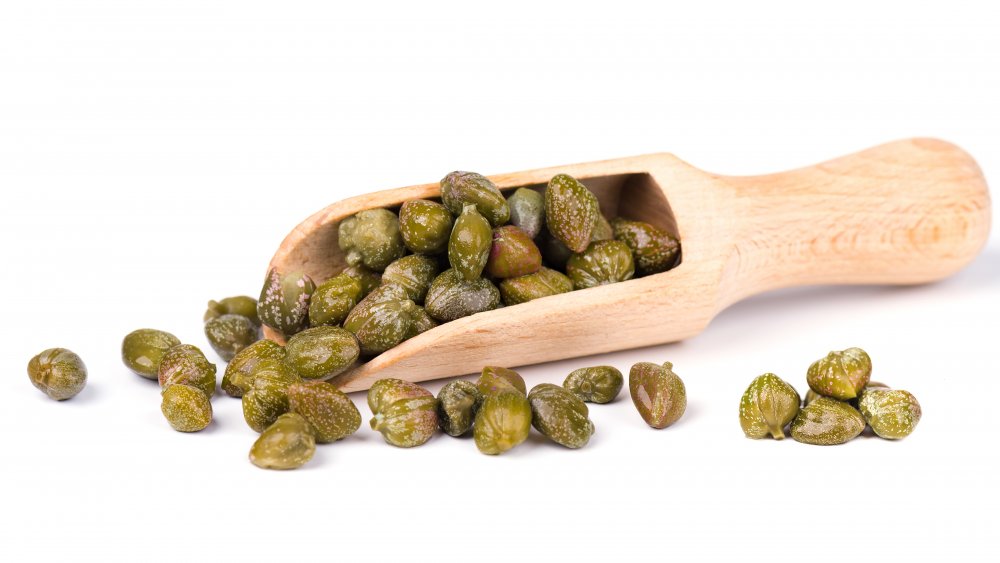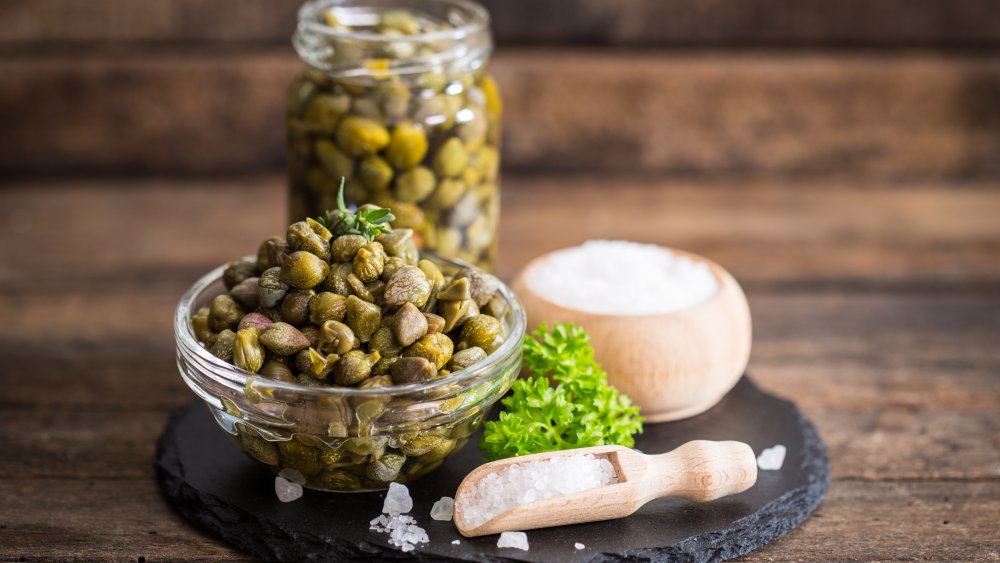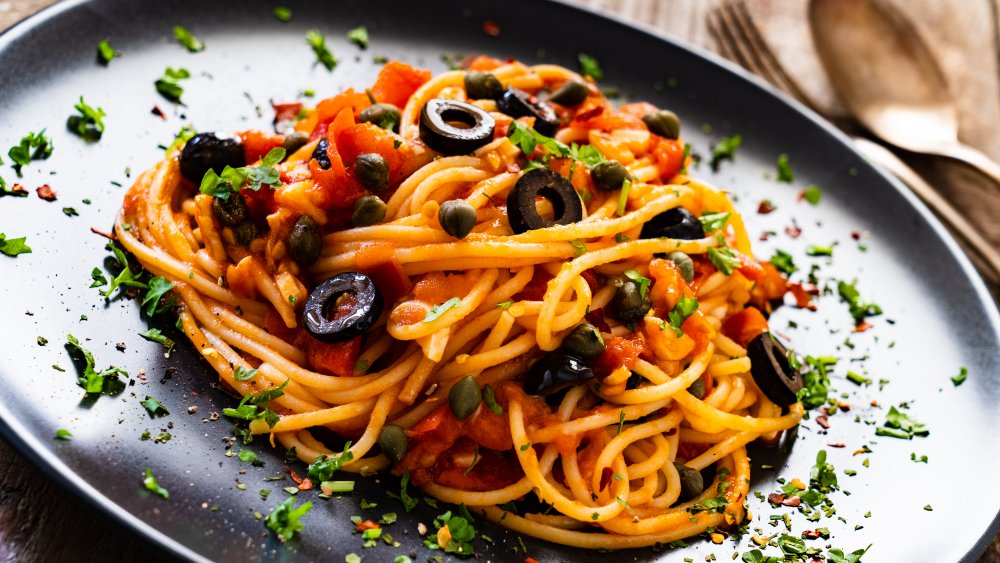What Are Capers And What Do They Taste Like?
Capers are a staple in recipes like chicken piccata or sprinkled sparingly over bagels and lox, but many home chefs aren't aware of their origins and deep history. According to The Spruce Eats, these miniature green treats are in fact flower buds, plucked off the caper bush (Capparis spinosa or Capparis inermis) before full maturity.
Capers have been flourishing in Mediterranean and Asian climes since ancient eras — and their harvesting process remains old-school, requiring handpicking individually before being sun-dried and preserved in a pickling liquid or salt (via HuffPost). If allowed to mature, capers grow into caperberries, also edible but larger than the prized nonpareil variety of capers and compared to "little olives."
Unpacking the complex flavors of capers
Capers may be tiny, but they pack a lot of flavor in a small package. Bon Appétit notes that they're bitter when harvested, but the pickling process diminishes that downside over time, creating "little flavor bombs" that are simultaneously salty and acidic, boasting lemony flavor properties with "a little funky, vegetal tang."
They have a variety of health perks, too: Science Daily reported on a 2007 Italian study that showed, due to their antioxidant properties, capers "helped prevent the formation of certain byproducts of digested meat," thereby possibly decreasing risks for cancer and heart disease. Don't let their minuscule size fool you — the study found that capers can offer these benefits even though they're commonly used in small quantities.
Cooking with capers
For those who don't have capers on hand, various substitutions can work in a pinch. But it's a good idea to invest in the real thing, as capers prove versatile in both food and drink applications.
Bon Appétit recommends them for pastas, eggs, sauces, seafood, veggies, and even as additions to a cheeseboard. Meanwhile, The Spruce Eats points out the many ways in which they're used for Mediterranean classics — the French Niçoise salad, Italian pasta puttanesca, and Greek salads — and, in the United States, atop pizzas or deviled eggs, as an olive replacement in martinis, or as a Bloody Mary garnish.
Even better, thanks to capers' concentrated flavor, you needn't use many to reap their zesty effects across the menu.


